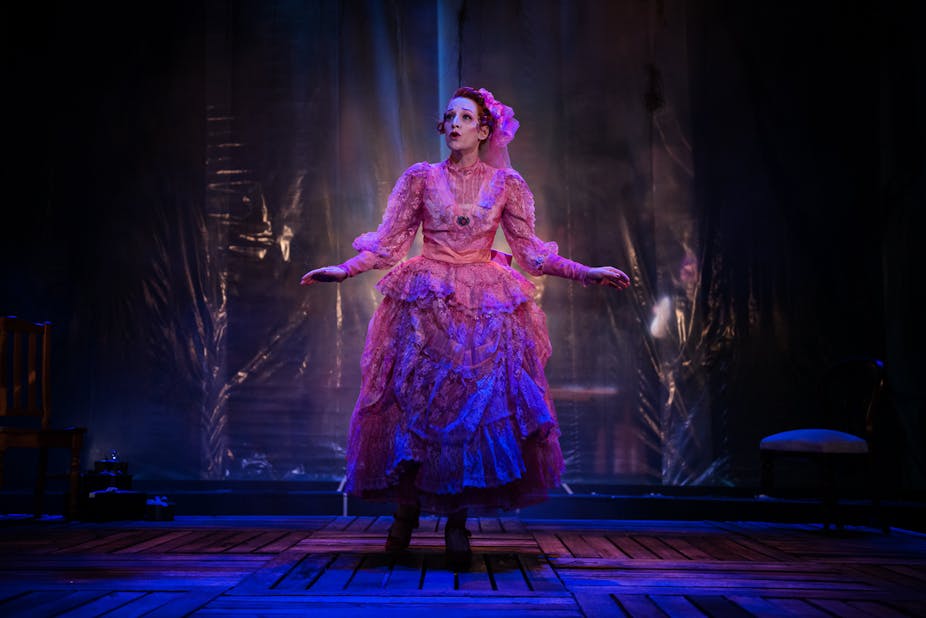When Jane Caro compared traditional marriage to prostitution on a recent episode of Q&A, she did not mean to conflate today’s stay-at-home mothers with sex workers.
But that didn’t stop the loud handful who had missed (or ignored) the historical frame from airing their consternation at Caro’s perceived denigration of “housewives” as “whores”.
Clearly those who objected to the idea that marriage has a long history as an economic institution in which women have traded sex for resources have never read Jane Austen’s Pride and Prejudice. Or if they have they have failed to grasp its central tenet.
It’s also a safe bet that they haven’t thought much about Henrik Ibsen’s 19th-century masterpiece A Doll’s House, which outraged audiences when it premiered at the Royal Theatre in Copenhagen in 1879 for its daring critique of the “holy covenant” of marriage.
Ibsen’s inspiration for the play came from the real-life story of a good friend, Laura Kieler, whose husband committed her to an asylum after she forged a bank cheque in a secret effort to fund a cure for his tuberculosis.
Ibsen was incensed by the injustice: “A woman cannot be herself in modern society”, he said in Notes for a Modern Tragedy, “with laws made by men and with prosecutors and judges who assess feminine conduct from a masculine standpoint”.
In an outrageous and surprisingly hilarious new version of A Doll’s House currently playing at the Brisbane Festival, dramatist Lally Katz injects Ibsen’s play with techno music and stuffs it with popular culture references to everything from menopause to internet porn.
Staged in La Boite’s Roundhouse Theatre, Dan Potra’s fabulous set is a giant chess board built of packing crates, overhung by netting that serves as a metaphor for the “tangled web we weave / when first we practice to deceive”. Director Steven Mitchell Wright has the actors traverse the stage at eerie parallels, each condemned to a life without connection. Blinded by secrets and lies, their gaze can never meet.
Helen Christinson is marvellous as the infantilised Nora – think Material Girl meets Effie Trinket – whose fashion sense derives in a straight line from the pink macaroons on which she furiously binges (in private).
Hugh Parker plays Torvald Helmer, Nora’s banker-husband with a cringe-worthy penchant for zoomorphizing his wife – not as a squirrel (hoarder of lies, secrets, money) as in Ibsen’s original, but as an effervescent hummingbird put on this earth for his sole delight:
“It tickles me when you get excited, Nora,” Torvald says in high praise of her vapid-enchantress act.
Nora signals her transformation into a Modern Woman in the final act by stripping off her Like a Virgin-inspired costume – white lace, black gloves, crucifix, etcetera – to reveal her inner Pretty Woman, which in this case is clad in a slinky black dress and cerulean blue ankle-boots.
Of course it’s entirely possible Nora’s little number (replete with sexy cutouts) is not intentionally suggestive of a Working Girl at all, but rather a self-possessed Working Woman in contemporary office attire – but to dissect the difference here would be to construct a battlefield I’m not about to die on.
Nora’s striptease is accompanied by a sermon of predigested ideas – something along the lines of Charlene’s “I’ve been to paradise, but I’ve never been to me” – delivered with such sincerity that it’s a teeny bit of a relief (for the wrong reasons) when Nora finally walks out on her marriage and her children.
A harder hitting ending would have had some of the grunt and fire of Julia Gillard’s famous misogyny speech which showed that, more than a century on, Ibsen’s slamming door can still reverberate around the world.
A Doll’s House plays at the Brisbane Festival until September 27..

